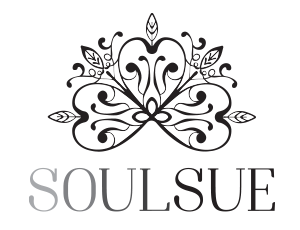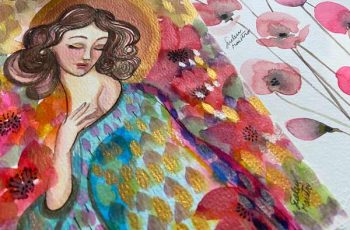The connection between art and mental health is gaining recognition worldwide. Across Europe and beyond, creative expression is increasingly used as a powerful tool to support wellbeing, manage emotional challenges, and build community. But what does the research say? And why is art such a natural medicine for the mind?
Art and Mental Health: What Does the Science Say?
1. Systematic Reviews & Meta-Analyses
-
A systematic review of active visual art therapy, including 50 studies and over 2,700 participants, found that art therapy improved about 18% of measured mental health outcomes, versus just 1% in control groups. Effects included better mood, self-esteem, social adjustment and quality of life.
-
A meta-analysis of creative arts therapy for PTSD in adults (7 controlled studies, ~665 participants) showed a significant reduction in PTSD symptoms (SMD = ‑1.98, p <0.03).
-
Creative activities—like crafts, group art, collage, dance—have been linked to reduced stress, improved mood, and cognitive benefits, even in short-term settings.
2. Broader Evidence & Public Health
-
A wide range of studies, including a scoping WHO report synthesizing over 900 publications, highlight the mental health benefits of arts engagement in emotional regulation, social connection, resilience and overall wellbeing.
-
Expressive therapies (art, music, drama, dance) are known to relieve emotional tension, support self-awareness, and offer coping mechanisms—even in trauma recovery settings.
Key Benefits According to Research
-
Reduced symptoms of depression, anxiety and PTSD.
-
Improved emotional regulation, self-esteem and quality of life.
-
Enhanced cognitive and social function, even with brief interventions.
-
Benefits apparent across ages, settings, and artistic modalities.
Art as a Universal Language
Art therapy and creative engagement are effective regardless of artistic skill. The process — not the result — is what heals. Painting, music, sculpture, dance, writing, or simply doodling can open pathways for self-discovery and relief.
-
“Art is a language of emotion. It makes visible what words cannot.”
— Dr. Daisy Fancourt, leading researcher in arts and public health, University College London
How Art Therapy Is Used in Europe
-
United Kingdom:
NHS social prescribing — GPs refer patients to art groups, museums, or creative workshops for mental health support. -
Nordic countries:
Municipalities sponsor community art programmes for all ages as part of public health policy. -
Ireland:
Hospitals, mental health clinics, and community centres run regular art therapy sessions for various populations, including youth, trauma survivors, and older adults.
Curiosities & Case Studies
-
In the Netherlands, hospitalised children participate in painting and music projects that measurably decrease stress and pain.
-
In Scandinavia, public art installations are shown to increase feelings of safety and belonging in urban spaces.
-
The “Arts on Prescription” model in the UK is spreading across Europe and shows strong evidence of reducing GP appointments and medication use for mild/moderate mental health problems.
FAQ
Q: Does art really help with mental health?
A: Yes. Numerous studies and WHO reports confirm that creative activities reduce stress, anxiety, and depressive symptoms.
Q: Do I need to be an artist to benefit from art therapy?
A: Not at all. The positive effects come from the creative process itself, not artistic skill.
Q: Is art therapy available in Europe?
A: Yes. Many countries, including the UK and Ireland, now offer art therapy or “arts on prescription” through public health services.
Q: What type of art is most effective?
A: All forms of art—painting, music, writing, dance—can benefit mental health. Choose what brings you joy.
Q: Where can I read more research about this?
A: The WHO report and The Lancet study are great starting points.
My Personal Perspective as an Artist
As an artist, I’ve learned that technical skill and constant study are important—but for me, art began as something much deeper. Since childhood, art has been my sacred refuge. It was the only place where my thoughts could enter a true state of flow, surrendering to a kind of mental rest that nothing else ever offered me. Over time, art became not just a sanctuary, but a space for emotional expression—a way to quietly show who I truly was, especially when my shyness made it hard to be fully myself in daily life.
Now, as an adult who has gradually overcome a very intense depression, art has once again become an essential support. Through painting and creating, my thoughts settle, rest, and reorganise themselves. It’s in this process that I can finally breathe and focus. That’s why I truly believe art can change people’s lives in countless ways—whether it’s woven into their daily routine as a form of gentle self-expression, or whether it reaches their feelings with honesty, awakening emotions that lead to healing.
* The artwork illustrating this post is my original acrylic painting — sold. All rights reserved.*
What’s the craic? More soul, more stories, right this way:
- Watercolour Painting: Stains That Suggest Shapes
- My Urban Wellbeing Blog: Where Real Life Meets Soul
References:
- Supporting youth mental health with arts-based strategies: a global perspective
- Active Visual Art Therapy and Health Outcomes
-
Active Visual Art Therapy and Health Outcomes: A Systematic Review and Meta-Analysis
- Colors of the mind: a meta-analysis of creative arts therapy as an approach for post-traumatic stress disorder intervention


